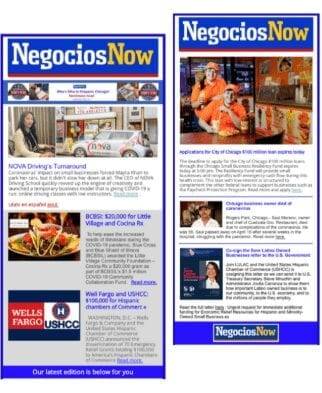By Michael Lucci*-
American workers filed 5.2 million initial unemployment insurance claims in the week ending April 11, according to new data from the Department of Labor, continuing a stunning rate of new unemployment claims. There have been 22 million initial unemployment claims over the past four weeks, a breathtaking rate of job loss never before seen in American history.
This new data adjusts our real-time unemployment estimate up to 17.9 percent through April 11. Our previous estimate was 14.7 percent through April 4.
The federal CARES Act, signed into law March 27, expanded unemployment insurance eligibility and made benefits more generous. Newly eligible groups include self-employed and gig-economy workers. In addition, the federal portion of the unemployment benefit was increased to a more generous $600 per week. These two provisions likely lead to greater use of the unemployment program and keep new claims at elevated levels, especially since some states are experiencing delays in processing claims for newly eligible gig-economy workers.
The number of new claims for the week ending April 11 decreased from the previous week’s 6.6 million initial claims. However, there is nothing particularly encouraging about the new data. New claims remain near record levels, and the total number of unemployed Americans is piling up higher each week. There were 282,000 claims made in the week ending March 14, a relatively normal weekly amount. Initial claims shot up to 3.3 million, 6.9 million, 6.6 million and 5.2 million in the following weeks.

The unemployment count was 7.1 million as of the BLS’ March report. There have been 22 million initial unemployment claims since the BLS collected unemployment data for its March unemployment report. If these two numbers are simply combined, that creates 29 million unemployed Americans through April 11, making the real-time unemployment rate of 17.9 percent.

The U.S. unemployment rate peaked out at 10.0 percent during the Great Recession, with the peak month coming in October 2009. There were 15.3 million unemployed at the time. It took 31 months for the U.S. to reach peak unemployment during the Great Recession, from a bottom of 4.4 percent in March 2007 to a top of 10.0 percent in October 2009.
The U.S. has reached an estimated 29 million unemployed and an estimated 17.9 percent unemployment rate in just over four weeks during this pandemic recession. It remains to be seen whether BLS’ April jobs report recognizes the 22 million newly jobless as unemployed or out of the workforce.
However, the BLS’ definition of unemployment requires that someone actively looking for work in order to be categorized as unemployed. Many of those who lost their jobs due to the pandemic outbreak is probably not actively seeking new jobs, both because unemployment benefits are generous and because seeking new work might be medically risky or incredibly difficult during widespread business shutdowns.
These unemployed workers might instead be categorized as out of the workforce, as occurred in the BLS’ March jobs report. Total household employment fell by 3 million in March, with 1.35 million becoming unemployed and 1.65 million becoming categorized as out of the workforce. The damage in the labor market and the idea implicit in “real-time” unemployment will best be captured in a falling employment-population ratio when the BLS’ April report is released.
The U.S. labor force is witnessing its steepest and most sudden employment drop in history, regardless of whether those newly jobless workers end up being considered unemployed or out of the workforce. Economic activity is depressed because of the pandemic outbreak and the widespread shutdown of businesses. Economic research from the 1918 influenza pandemic shows that pandemics depress the economy, leaving policymakers with no easy solutions in balancing health care risks with economic growth.
Federal policymakers have taken extraordinary actions to help businesses survive and to help unemployed workers have a paycheck during the shutdown. However, it is unclear when broad shutdowns can end given that the virus is still spreading in many areas. Whenever a sound strategy can be executed for reopening the economy, state and local policymakers need to do their part to ensure that workers and businesses can get started by making it simple for existing businesses to hire and operate, for new businesses to start-up and thrive, and for unemployed workers to find new jobs or enter new occupations.
Just as federal policymakers took emergency actions to help businesses survive, state and local policymakers will need to take emergency actions to cut red tape and allow businesses and workers to thrive.
– The Center Square
Michael Lucci is the President and publisher of 50economy.org. He also serves as a Senior Policy Advisor to the State Policy Network. He previously was the Vice President of State Projects for the Tax Foundation, based in Washington D.C. Prior to that, he served as Illinois Governor Bruce Rauner’s Deputy Chief of Staff for Policy. He began his policy career at Illinois Policy Institute, where he was a Vice President of Policy.










